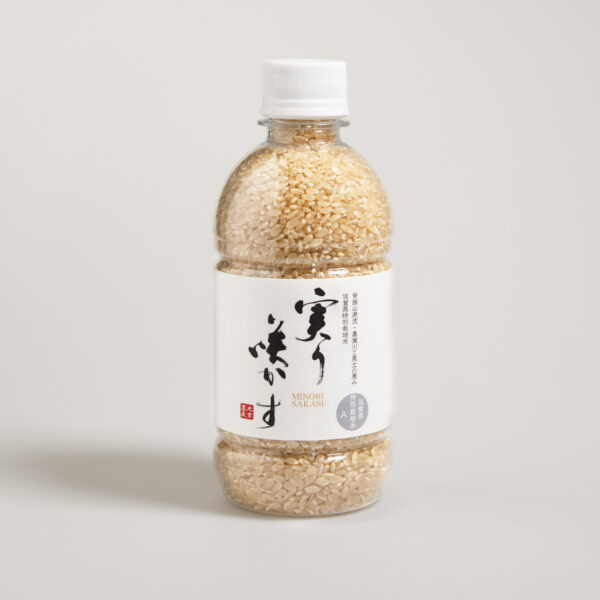Brown & black rice
Showing all 2 results
Products
-
Unpolished Rice in PET Bottle
Producteur : Minori Sakasu 18.50 € Add to basket -
“Fukumaru” Brown Rice
12.50 € Add to basket
In Japan, brown rice is called “genmai”. This term refers to both rice that still has all of its bran (wholegrain) and rice that has had some of the bran removed (semi-finished). However, in a stroke of genius, the Japanese have divided the semi-finished family into numerous more or less planed varieties called “buzukimai”.
Some Japanese shops and supermarkets with polishing machines offer customers the chance to polish their semi-finished rice to their liking: if you want the grains to have only 30% of their bran left, it’s possible!
The different types of rice
In our part of the world, grocery stores don’t stock home polishers, and buzukimai are rare if not impossible to find. It’s easier to find germinated brown rice known as ‘hatsuga-genmai’ or ‘haiga-mai’, which has been stripped of its bran but not its germ, and ‘red’ or ‘black’ rice, which is particularly rich in vitamins and trace elements.
These varieties, once considered weeds, are now used to enhance the nutritional value of a bowl of white rice, while giving it a beautiful pink or slightly purple colour. Such blends can help you avoid beriberi, the disease that once afflicted Japanese nobles who were too fond of white rice.
The benefits of Japanese rice
Japanese rice as we imagine it, white and pearly, dressed in maki or smoked under a breaded tonkatsu pork cutlet, is in fact a processed product: by rubbing it in rice polishing machines, it has been stripped of its brown husk, its top layers and its germ.
As a result, its taste, texture and, above all, its nutritional value have been turned upside down: the grains are softer and more elegant, but contain far less fibre, vitamins and minerals than whole grain rice. To solve this, simply eat brown rice.
.png)

